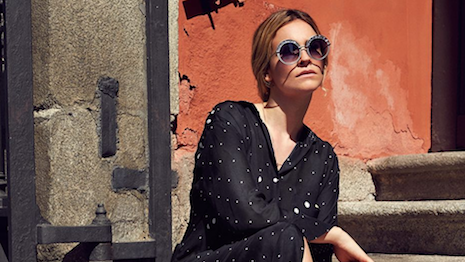- About
- Subscribe Now
- New York,
May 9, 2019

 Safilo experienced the greatest jump in stock prices. Image credit: Jimmy Choo
Safilo experienced the greatest jump in stock prices. Image credit: Jimmy Choo
A boost in spending in mainland China was a significant contributor in increased sales for several luxury brands last month, with the industry as a whole experiencing double-digit sales growth.
This month’s Savigny Index reveals that luxury conglomerates LVMH and Kering continue to lead the industry, while independent brands and smaller groups experienced more modest increases in stock prices and sales. Hermès and Moncler also saw significant increases in sales.
Stronger together
Eyewear manufacturer Safilo experienced the greatest jump in stock prices among luxury brands, as its share price climbed 32.2 percent in April.
Last month, Safilo announced it entered a joint venture with South Korea-based Parma International for added growth in the region. The venture will result in a variety of digital media and marketing initiatives. Safilo will control 51 percent of the joint venture, which will be operated in Seoul, South Korea (see story).
Despite being the only luxury company to see double-digit growth in share prices, Safilo experienced a 5.2 percent decline in sales growth for the month.
Tod’s was the only other luxury brand to see sales growth fall in April, with a decrease of less than 1 percent.
Swatch followed in terms of rising share prices, with stock prices growing 9.2 percent. Hermès, LVMH and Tod’s all saw stock prices jump more than 6 percent.
In April, Hermès saw its sales grow by 14.3 percent. The company also reported a 16 percent rise in sales in the first quarter this year, totaling 1.6 billion euros, or $1.78 billion at current exchange (see story).
Additionally, Kering, Moncler, Capri Holdings, LVMH and Brunello Cucinelli all saw double-digit sales growth. The Savigny Index shows an average sales growth of 12.3 percent for all the brands it evaluates.
Independent brands including Tiffany & Co., Burberry and Ferragamo experienced modest sales growth, ranging from 0.3 to 3.7 percent.
However, U.S. luxury groups Capri Holdings and Tapestry experienced stock price declines of 3.7 and 0.7 percent, respectively, despite positive sales growth.
At a decline of 5.1 percent, Italian fashion brand Prada saw the largest drop in share prices. Sales grew at a rate of 4.1 percent.
Since February, the Savigny Luxury Index has grown 4.7 percent, compared to the MSCI World Index’s 3.3 percent increase.
Global look
Fears of a continued economic slowdown in China have subsided as luxury brands continue to see growth.
With cuts in China’s value-added tax now in effect, luxury brands are reportedly responding by lowering their prices as the government hopes to reinvigorate the world’s second-largest economy.
While the Chinese economy is still growing, its pace has slowed considerably amid a drawn-out trade war with United States. The Chinese ecommerce market is the world’s most valuable, making an economic slowdown a major concern for luxury houses (see story).
Ten of the world’s leading luxury companies accounted for almost half of global luxury goods spending in the last fiscal year, as the overall industry grew more than 10 percent despite slowing economies in China, the United States and Europe.
According to Deloitte’s 2019 “Global Powers of Luxury Goods” report, French companies are the biggest contributors to worldwide luxury good sales. Although the clothing and footwear sector is the most represented within the luxury business, personal care and fragrance companies enjoyed the greatest sales growth (see story).
Share your thoughts. Click here